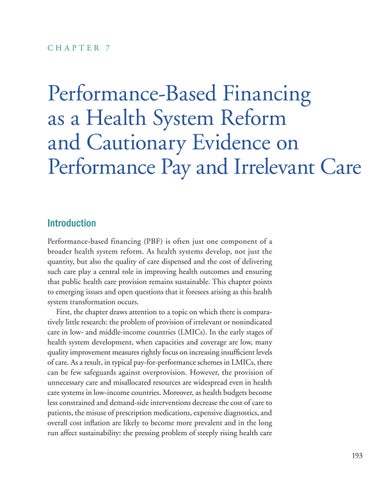CHAPTER 7
Performance-Based Financing as a Health System Reform and Cautionary Evidence on Performance Pay and Irrelevant Care Introduction Performance-based financing (PBF) is often just one component of a broader health system reform. As health systems develop, not just the quantity, but also the quality of care dispensed and the cost of delivering such care play a central role in improving health outcomes and ensuring that public health care provision remains sustainable. This chapter points to emerging issues and open questions that it foresees arising as this health system transformation occurs. First, the chapter draws attention to a topic on which there is comparatively little research: the problem of provision of irrelevant or nonindicated care in low- and middle-income countries (LMICs). In the early stages of health system development, when capacities and coverage are low, many quality improvement measures rightly focus on increasing insufficient levels of care. As a result, in typical pay-for-performance schemes in LMICs, there can be few safeguards against overprovision. However, the provision of unnecessary care and misallocated resources are widespread even in health care systems in low-income countries. Moreover, as health budgets become less constrained and demand-side interventions decrease the cost of care to patients, the misuse of prescription medications, expensive diagnostics, and overall cost inflation are likely to become more prevalent and in the long run affect sustainability: the pressing problem of steeply rising health care 193

